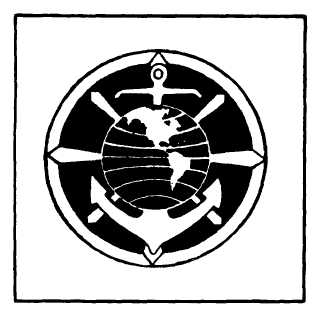On 9 May 1979, the Chief of Naval Opera-
tions approved the RP rating insignia which is
shown in figure II-1-7. It consists of a compass,
globe, and an anchor, The compass suggests the
direction which religion gives to life; the globe
symbolizes that religious ministries are available
throughout the world; and, the anchor indicates
that religious support is provided continually for
personnel of the naval services.
RP SKILLS AND KNOWLEDGE
The enlisted career pattern for RPs is shown
in figure II-1-8. Personnel who meet certain
specific requirements may apply for commis-
sioning to Warrant Officer Ship’s Clerk (741X)
and/or to Limited Duty Officer Administration
(641X). It is important for individuals to prepare
early in their careers for these officer programs.
Figure II-1-9 shows the occupational stand-
ards for RP3; figure II-1-10 shows the occupa-
tional standards for RP2; figure II-1-11 shows
the occupational standards for RP1; and figure
II-1-12 shows the occupational standards for
RPC, RPCS, and RPCM. As indicated by these
Figure II-1-7.—Religious Program Specialist Rating
Insignia.
Figure II-1-8.—Career Pattern For Religious Program
Specialist.
four figures, individuals must possess greater
knowledge and skill as they move up the
“enlisted ladder.” Greater knowledge and skill
may be acquired through a number of sources
including RP “A” and “C” schools; other Navy
schools such as leadership, career counselor, and
instructor training; correspondence courses; col-
lege courses; seminars; and, most important, on-
the-job training supervised by Navy chaplains
and senior RPs.
RPs are responsible for meeting the specific
requirements of their present rate. They are also
required to meet the occupational standard re-
quirements of all the rates leading to their pre-
sent rate. For example, an RP1 must be able to
meet the requirements for RP3, RP2, and RP1
in order to perform at a satisfactory level as a
first class petty officer.
1-12




